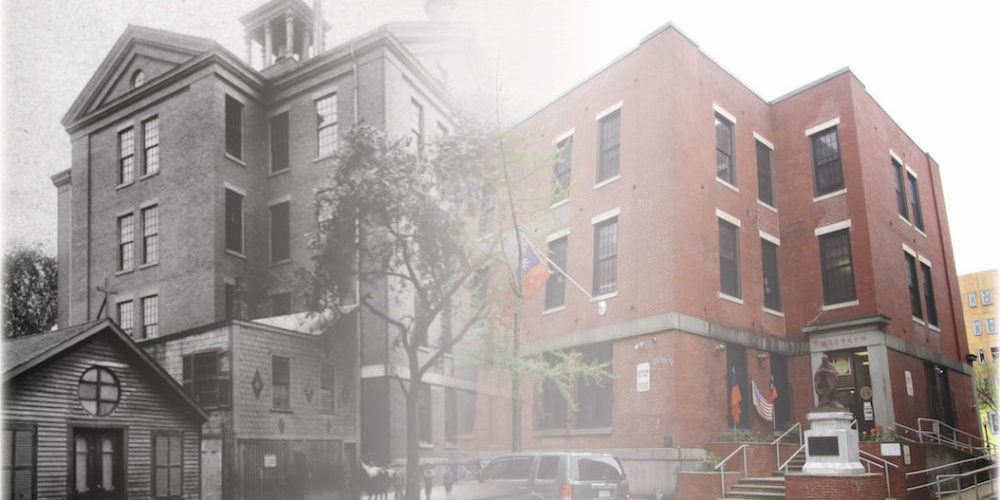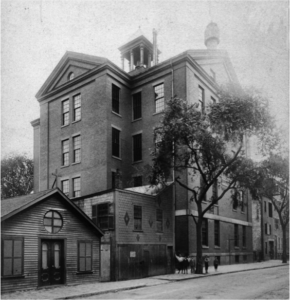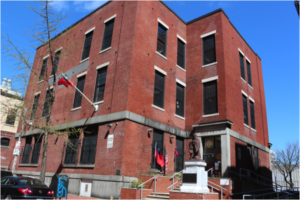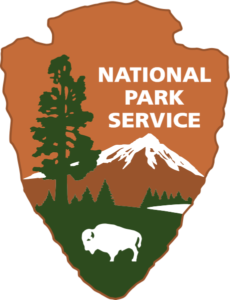
National Register of Historic Places
- Home / Front page news /
- National Register of Historic Places
National Register of Historic Places
The Chinese Historical Society of New England (CHSNE) is partnering with Massachusetts Historical Commission (MHC) and the Chinese Consolidated Benevolent Association of New England (CCBA) to register the first site connected to Chinese in Boston to the National Register of Historic Places. Over the past year, consultants have been writing the application to nominate CCBA’s Old Quincy School building, and an overview about the Chinese in Boston context-study. These two documents will become public record and allow future researchers/generations the opportunity to know about the experience of our ancestors and community.
紐英崙華人歷史協會,馬萨诸塞州歷史委员會,及紐英崙中華公所合作,把波士頓第一個華人地產,列入國家史蹟名錄。過去一年,專家準備申請書提名紐英崙中華公所地產舊昆士學校,及有關波士頓華人資料。這些文件會成為公共紀錄,為研討者和後代提供機會,認識波士頓華人先人和社區經驗。
The comment period for this nomination closed on May 31st.
5月31曰前,紐英崙華人歷史協會歡迎社區提供意見
The Old Quincy School was officially accepted into the National Register of Historic Places in August 2017!
National Register
The National Register of Historic Places is the official list of the Nation’s historic places worthy of preservation. Authorized by the National Historic Preservation Act of 1966, the National Park Service’s National Register of Historic Places is part of a national program to coordinate and support public and private efforts to identify, evaluate, and protect America’s historic and archeological resources.
Listing of this property provides recognition of the community’s important historic resources and assures protective review of Federal properties that might adversely affect the character of the property. If the property is listed in the National Register, certain Federal investment tax credits for rehabilitation and other provisions may apply.
Listing in the National Register does not mean that limitations will be placed on the property by the Federal government. Public visitation rights are not required of property owners. The Federal government will not attach restrictive covenants to the property or seek to acquire it. If a property is listed in the National Register, the owner may do anything with it that s/he wishes, unless state or federal historic rehabilitation tax credits, funds, permits, or licensing are used, or unless some other region and/or local ordinance of policy is in effect.
National Register of Historic Places: Effects and Benefits of Listing | English | 中文
Rights of Private Property Owners to Comment and/or Reject to Listing in the National Register | English | 中文
Difference between a Local Historic District and a National Register District | English | 中文
Context Study
The Context Study is a detailed account of Boston’s Chinatown’s history, urban development, and and the importance of the Chinese community in these spaces. Its divided into four historical sections: South Cove Before Chinese Immigration, 1805‐1875; Buildings and Spaces of the Chinese Settlement Era, 1875‐1900; Boston’s Chinese Community Develops, 1900‐1943; and Chinatown After Exclusion, 1943‐1985. The study also includes brief information on present-day Chinatown (1985-2017) as well as images, maps, and geographical data.
Read the Context Study (145 pages)
The Context Summary is a condensed overview of the Context Study. Due to its shortened length, it does not contain the full detail of the Context Study. However, it does provide an overview of the nomination and historical attributes of the original Josiah Quincy School building and its place in the history of the American education system and Boston’s Chinese community.
Read the Context Summary (2 pages)
Old Quincy School
The first individual property being nominated for listing in the National Register under this context is the Old Quincy School, located 88-90 Tyler Street, and home of the Chinese Consolidated Benevolent Association. The brick building was completed in 1859, built in the same manner and on the foundation of a four-story gable-roofed building built in 1848 and destroyed by fire ten years later. In 1938 the gable roof of the main building collapsed during a hurricane, after which the roof and fourth floor were removed and the existing flat roof was created. Stair towers attached to the north and south walls also were lowered from four to three stories at that time; they are distinguished by front and rear Greek Revival-style entrances that reflect the design of the leading Boston architect of the time, Gridley J.S. Bryant, known for his many civic and commercial buildings in Boston and the region.
The brick exterior of the building is supported on a granite basement, and includes a decorative band of granite above the first-story windows and marble window lintels and sills. There are four classrooms on each of the three stories, two on either side of a hallway connecting to stair towers. The original wood wainscot, doors, window and door trim and blackboards from 1859 all remain largely intact. Two rooms on the first story have been consolidated into one. In 1913, a two-story, technical training annex was added to the north side of the building. After the 1938 renovations, the Quincy Grammar School remained unchanged until its closing in 1976, when students were relocated to the Josiah Quincy Elementary School on Washington Street. In 1983, the Chinese Consolidated Benevolent Association of New England (CCBA) acquired the former school from the City of Boston. CCBA rehabilitated and repurposed the building to serve a variety of Chinese American civic and cultural groups and activities.
The Quincy Grammar School is significant as a distinctive example of mid-19th century progressive school architecture that served as the model of educational reforms introduced by Horace Mann and other educators in Boston and beyond. It also is significant as a historic institutional property associated with Chinese immigrants and Chinese Americans in the City of Boston.
The school was the first “graded” grammar school in Massachusetts and possibly in the United States. Built in 1848 during a wave of reform in schoolhouse architecture and construction, the Quincy Grammar School was the first to reflect the educational model promoted by Horace Mann, the first secretary of the Massachusetts Board of Education. It followed the Prussian practice of grouping students according to age and achievement. Prior to this, American students were typically taught in large, mixed-age classes run by two teachers. The Quincy School was organized into multiple graded classes grouped by age and ability, each headed by one teacher. Later in its history, the Quincy Grammar School was also the location in 1913 of one of the first classes in the United States taught following the educational theories of Maria Montessori.
With the changing population of the South Cove neighborhood, students at the Quincy School by the early 20th century represented a diversity of immigrant groups, and by the 1940s when many families in Chinatown were relocating south of Kneeland Street, over a third of the School’s students were Chinese or Chinese American. By the time it closed in 1976, over 90% of the school’s population was Chinese American. The Quincy School played a pivotal role in the education of Boston’s Chinese community, as well as teaching English as a second language and other immigrant skills during a period when large numbers of new Chinese families were arriving in Boston. Even though the school closed in 1976, it found renewed life in 1983 when it was acquired by the CCBA, a vitally important community organization, composed of many charitable and cultural Chinese groups, that operates a multifaceted program in the building. Under CCBA’s ownership, the significant era of preserving and presenting Chinese culture for the benefit of Boston’s Chinese American community has continued strongly into the present. Despite the loss of its upper story and roof, the Quincy School still represents an architectural and historic landmark dating from the mid-19th century and a significant educational and community institution historically serving the Chinese immigrant and Chinese American community of Boston.
Read the Nomination (35 pages)
Community Meetings
CHSNE will present updates on the nomination at the following community meetings:
Chinatown Residents Association (CRA): Wednesday, May 3rd, 6:30pm @ Josiah Quincy School, 885 Washington St, Boston | Watch the Facebook LiveStream
The Chinatown Coalition (TCC): Thursday, May 11th, 9:30am @ Boston Chinatown Neighborhood Center, 38 Ash St, Boston
Chinatown/South Cove Neighborhood Council (CNC): Monday, May 15th, 6:00pm @ Chinese Consolidated Benevolent Association, 90 Tyler St, Boston
Chinese Consolidated Benevolent Association (CCBA): Tuesday, May 30th, 7:00pm @ 90 Tyler St, Boston
Massachusetts Historical Commission Meeting | State Review: Wednesday, June 14th, 1:00pm @ Massachusetts Historical Commission, Archives Building, 220 Morrissey Blvd, Boston 02125
Links to handouts
National Register of Historic Places: Effects and Benefits of Listing | English | 中文
Rights of Private Property Owners to Comment and/or Reject to Listing in the National Register | English | 中文
Difference between a Local Historic District and a National Register District | English | 中文
FAQ
National Register 國家史蹟名錄
Q: What is the National Register of Historic Places?
A: The National Register of Historic Places is the official list of the Nation’s historic places worthy of preservation. Authorized by the National Historic Preservation Act of 1966, the National Park Service’s National Register of Historic Places is part of a national program to coordinate and support public and private efforts to identify, evaluate, and protect America’s historic and archeological resources.
問:什麼是“國家史蹟名錄” National Register of Historic Places”?
答:國家史蹟名錄是美國國家認為值得保護的史蹟的官方名单。根據1996年國家史蹟保護法案 (National Historic Preservation Act of 1966) 美國國家公園管理局 (National Park Service) 國家史蹟名錄是聯絡,支持,列舉,評估,保護國家公共,私人史蹟地產/工程/資源的聯邦项目。
Q: What are the implications of owning a building on the National Register?
A: Listing in the National Register does not mean that limitations will be placed on the property. The Federal government will not attach restrictive covenants to the property or seek to acquire it. If a property is listed in the National Register, the owner may do anything with it that s/he wishes, unless state or federal historic rehabilitation tax credits, funds, permits, or licensing are used, or unless some other regional and/or local ordinance or policy is in effect. Public visitation rights are not required of property owners. National Register listing places no restrictions on using or selling the property.
NOTE: Some properties on the National Register are also within local historic districts or have been designated as local landmarks. These are completely different local designations that involve completely separate processes. We’re applying for National Register designation by the Federal government, NOT a local designation by the Boston Landmarks Commission.
問:私人地產列入國家史蹟名錄有什麼 影响?
答:列入國家史蹟名錄本身對地產所有人如何處置其列入名錄的私人地產并無限制。不會對現有的地方法规或條例增加额外的限制,也不會消除當前有效的法规。聯邦政府不會干涉或採購。只要不涉及聯邦或州或地方法规,條例或政策,资金、執照、許可或批准,列入國家史蹟名錄的地產所有人可自由處置其私人地產。包括使用,出賣,也無義務向公眾開放該私人地產。
附注:有些列入國家史蹟名錄的地產,隸屬地方歷史區域 (local historic district) 或列入地方地標 (designated as local landmarks) 。它們入選是透過不同程序。我們是向聯邦政府申請列入國家史蹟名錄,並非向波士頓地標局 (Boston Landmarks Commission)。
Q: What are the benefits of owning a building on the National Register?
A: National Register listing officially recognizes and celebrates our history. It means that the property has been designated on a national list as historically and/or architecturally significant. National Register listing provides limited opportunities for grants and tax credits. Properties owned by municipalities or nonprofit organizations may be eligible for grants from the Massachusetts Preservation Projects Fund, a state-funded competitive program supporting preservation and maintenance projects. Income-producing properties may be eligible for federal and state tax credits for substantial rehabilitation that meets the Secretary of the Interior’s Standards for Rehabilitation.
問:私人地產列入國家史蹟名錄有什麼好處?
答:列入國家史蹟名錄是認可,慶祝我們的社區、州及國家具有重大意義的歷史性地產。獨一無二、不可替代的歷史資源,给我們的城市、社區赋予時代感与地方感,共同塑造社區的風貌。并且有資格申請获得某些州的修復補助金,例如麻塞諸塞州保護项目基金 Massachusetts Preservation Projects Fund 提供的補助金,及經证實修復项目的某些税收優惠。
Nomination 提名程序
Q: What is the nomination process like?
A: Before the nomination process can begin, the property being proposed is evaluated by preservation staff of the Massachusetts Historical Commission (MHC) to see whether in their opinion it meets the criteria for listing in the National Register. The preservation staff of the Boston Landmarks Commission (BLC) also participates in evaluation and reviewing nominations because they have been certified by the National Park Service as a “certified local government” due to their experience with historic preservation programs, and the National Register program in particular.
The nomination process includes the preparation of a formal document that records the property’s present appearance and places its story into historical context. The nomination describes the nominated property inside and out and assesses its historical significance over time, from construction to the present day. The nomination discusses the themes under which the property is significant. The nomination includes current and historic photographs and maps. As part of the nomination’s preparation, it is reviewed in draft form by the MHC staff.
- Mid April 2017: MHC schedules it for consideration by the State Review Board (SRB) of the MHC.
- Mid April 2017: A notification letter is sent to the property owner informing them of the plan to move ahead with the nomination.
- Late May 2017: The nomination is presented to the Boston Landmarks Commission for their approval.
- May 30, 2017: Property owners vote to grant approval to submit the official nomination
- June 14, 2017: At the SRB meeting, the nomination is presented for consideration by the authors and by preservation staff; following the presentation, there is the opportunity for public comment, after which the nomination is voted on by the SRB.
- Late June 2017: Assuming their vote is favorable, the nomination is sent to the National Register of Historic Places in Washington, DC, part of the National Park Service.
- August 2017: The property is listed in the National Register. A congratulatory letter and certificate will be sent to the property owner.
問:提名程序是怎樣?
答:提名程序進行之前,麻薩諸塞州歷史委員會 (Massachusetts Historical Commission) 的保護史蹟地產專家先評估,提名地產是不是符合列入國家史蹟名錄資格。美國國家公園管理局委派波士頓地標局(BLC)為地方代表,因為BLC 專家有保護史蹟地產經驗,也參與評估。
提名程序包括準備合適文件,詳述地產歷史背景,當前風貌,内外設施,從頭至尾,時代/地方/主題重大意義,新舊照片,地圖。麻薩諸塞州歷史委員會專家先評估申請草案。
- 2017 年 4 月中: 麻薩諸塞州歷史委員會的州審核會 (State Review Board) 排期評估提名申請案。
- 2017 年4月中: 通知書給地產所有人準備推動前進
- 2017 年 5月 尾: 提名書呈報波士頓地標局通過
- 2017 年 5月30日: 地產所有人(中華公所) 投票通過提名
- 2017 年 6月 14日: 州審核會開會,專家代表陳述/解答/推動前進/通過, 公眾查詢/提議後,州審核會 投票是不是通過提名
- 2017 年 6月尾: 如果投票通過,提名呈報美國國家公園管理局國家史蹟名錄處。
- 2017 年 8月: 地產列入國家史蹟名錄。地產所有人(中華公所) 收到証明文件/道賀信。
Context Study 相關研究文件
Q: What is the Context Study, and what does it cover?
A: The Context Study is a detailed 145-page account of Boston’s Chinatown’s history, urban development, and the importance of the Chinese community in these spaces. It is divided into four historical sections: South Cove Before Chinese Immigration, 1805‐1875; Buildings and Spaces of the Chinese Settlement Era, 1875‐1900; Boston’s Chinese Community Develops, 1900‐1943; and Chinatown After Exclusion, 1943‐1985. The study also includes brief information on present-day Chinatown (1985-2017) as well as images, maps, and geographical data.
問:什麼是相關研究文件?
答:相關研究文件145頁,詳述有關波士頓華人資料:華埠歷史,都市計劃,社區貢獻。,有4個歷史部分:1805-1875 華人移民前的南灣 (South Cove) ;1875-1900 華人移民的樓宇住宅;1900-1943 波士頓華人社區發展;1943-1985 停止排斥華人後的華埠。研究文件簡介當今 (1985-2017) 華埠的風貌,圖文,地理資料。
Q: Who wrote the Context Study?
A: The Context Study and National Register nomination were both written by historic preservation consultants, with additional input and editing from MHC staff (Deputy State Historic Preservation Officer and Register Director). In addition, documentary materials and editorial support were provided by CHSNE, Chinatown Atlas, Institute for Asian American Studies at UMASS Boston, and CCBA.
問:是誰撰寫相關研究文件?
答:史蹟專家撰寫相關研究文件及國家史蹟名錄提名申請案。麻薩諸塞州歷史委員會專家提供意見/修正。紐英崙華人歷史協會,華埠地圖 (Chinatown Atlas) ,麻薩諸塞州大學波士頓分校亞美研究中心,紐英崙中華公所提供文件及協助。
More Information 更多資料
Q: Where can I find a copy of the context study and nomination?
A: The context study can be found at tinyurl.com/NRcontext
The nomination can be found at tinyurl.com/NRnomination
A printed copy of the full context and nomination are available to read at CCBA’s library.
問:怎樣獲得一份相關研究文件及國家史蹟名錄提名申請案?
答:相關研究文件:tinyurl.com/NRcontext
提名申請案:tinyurl.com/NRnomination
紐英崙中華公所圖書館:相關研究文件,提名申請案
Q: Where can I find more information?
A: On CHSNE’s website: chsne.org/NR
問:怎樣獲得更多資料?
答: 紐英崙華人歷史協會網址:chsne.org/NR
Acknowledgements
Lead organizer:
Massachusetts Historical Commission (MHC)
Michael Steinitz
Betsy Friedberg
Consultants:
Neil Larson
Kathryn Grover
Community Partner:
Chinese Historical Society of New England (CHSNE)
Applicant:
Chinese Consolidated Benevolent Association of New England (CCBA)
From CHSNE:
David Chang
Susan Chinsen
Jessica Wong Camhi
Sherry Dong
From CCBA:
Nancy Lo
Paul Chan
Susan Luo
Historical Advisors:
Shauna Lo, Institute for Asian American Studies
Tunney Lee, Boston Chinatown Atlas
Wing-kai To, Bridgewater State University
Community Support:
Peter Chan
Amy Guen
Peter Kiang
Stephanie Fan
Jack Kayyem
Kate Chang
Representative Michael Capuano
Helen Chin Schlichte
The Chinatown Coalition
Chinatown Residents Association
Chinatown/South Cove Neighborhood Council
Chinese Historical Society of New England administrator
- Home
- About
- Events
- Programs▼
- Annual Meeting
- CHSNE Genealogy Workshop
- CHSNE Tunney F. Lee Memorial Lecture Series▼
- Coming to America
- “The Virulent Roots of American Violent Othering: Asians as disposable things, and other stories of dehumanization”
- Forever Struggle Activism, Identity, and Survival in Boston’s Chinatown, 1880-2018
- Laundry Rock: Histories of Boston’s Chinatown
- “Unsung Heroes: Recognizing and Honoring Chinese American World War II Veterans” Book Talk and Panel Discussion
- Stories from the City: Contemporary Chinese Senior Migrants and Boston’s Chinatown
- Lunch and learn
- Sojourner Award
- Mass. Memories Road Show
- Facing Exclusion
- Chinese-American Women Oral History Project
- Chinatown Tours
- Publications▼
- Archives▼
- Support▼
- Planning Your Visit
- Links
- Exhibits
- Exclusion Timeline
- Endurance Streets (堅韌的街道)
- These Words▼
- 150 Years of Chinese Students in America Initiative▼
- 中文












About the author